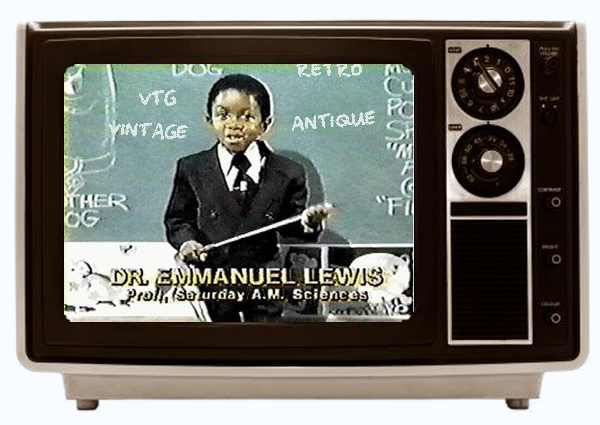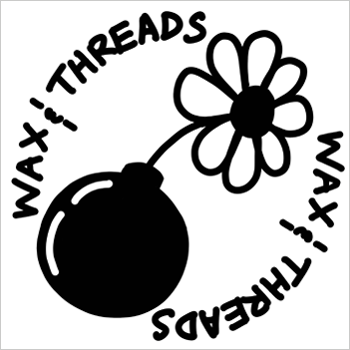Webster’s dictionary has this to say about the definition of vintage when used as an adjective:

Agreed.
But thanks to “the internets” the definition of vintage when applied to t-shirts has become quite muddled. This is mostly due to t-shirt manufacturers looking to leverage a popular marketing keyword. If you Google “vintage t-shirts” you wont find a single result on page one that offers actual vintage t-shirts. Instead you’re presented with modern day t-shirt manufacturers who produce new items that have a vintage look (like faux wear on the design), straight up reproductions of old designs or new versions of retro imagery.
Webster is probably rolling around in his grave right now. Not only was he an extremely small and talented sit-com actor, he was also a stickler for diction. Put away the tissues, I was just kidding – the little fella is still alive and could care less about grammar.
Noah Webster on the other hand, who published dictionaries and has long since passed, is indeed rolling around in his grave.
So let’s define vintage t-shirts and other related terminology – how they are used on our site (and in reality.)
VTG
Is a short form for Vintage. It was originally adapted as a search synonym on eBay to give sellers more room in limited character listing titles. When comparing the two searches on eBay, they bring exactly the same search results. While Google seems to recognize it as a short form, the two variations bring back quite different results.
Vintage T-Shirts
Applying Webster’s definition – a “vintage t-shirt” is a t-shirt that is not new. That leaves a big grey area, but suffice to say they don’t mean one year old. Some say 10, we say at least 15 years old. On Defunkd, a t-shirt must be at least 15 years old to be considered vintage. That’s why we don’t allow any t-shirts to be posted that were manufactured beyond the year 1999.
A true vintage t-shirt can usually be identified by its tag, with most of them now defunct. Typically they were made with a 50/50 blend of polyester and cotton which ensured they were softer. Although there was also a significant amount of 100% cotton blends.
Vintage Bootlegs
This term refers to a t-shirt that is also at least 15 years old – yet wasn’t licensed. Many of these were sold out of concert parking lots in the 1970s and 80s. They typically featured original artwork with a style that become synonymous with bootlegs. Given they are actually vintage, they are more scarce (far less were manufactured) and had original designs, they can be just as valuable as a rock artists licensed vintage t-shirts. Sorry Metallica.
Deadstock Vintage or NOS (New Old Stock)
Used to describe tees printed in another era that became excess/unsold inventory and typically ended up in storage. Most times they are in mint condition, however sometimes storage conditions can adversely effect their condition.
Retro T-Shirts
Retro tees are t-shirts manufactured in modern times, using original, yet vintage themed artwork for a nostalgic appeal. They’re printed on new t-shirts that many times are manufactured with softer fabric blends.
Reproduction or Reissue T-Shirts
These tees are also manufactured in modern times but they use artwork that was created in another era. Some of them are licensed, some of them aren’t. Metallica for example has reissued many of their 1980s designs. To make things a touch more confusing – some of these were reissued over 15 years ago so reproductions eventually become vintage reproductions.
Bootleg or Counterfeit Vintage
These happen when dishonest people set out to create a t-shirt in modern times and pass them off for true vintage. They make their best effort to copy an original and sought after design. They’ll find quantities of old blank tees or unbranded modern day vintage-esque tees. They they’ll typically post them online along side a small quantity of actual vintage t-shirts to dupe consumers into shelling out of them. Booooo.

Our guides:
Vintage T-Shirts 101: eBay Buyer’s Guide
Vintage T-Shirts 102: Say NO to Repro
Vintage T-Shirts 103: The Brand Gallery
Vintage T-Shirt 104: How to “Spot” a Fake


![[ LINK IN BIO ] In honor of May the 4th we connected with a gentleman named Shawn whose father, Ira, worked for ILM. He designed the Biker Scout, need we say more? Shawn shared an epic tale of a bootleg Star Wars tee his dad heroically stashed away despite George Lucas' attempt to have it destroyed.
.
RIP Ira Keeler. Long live the resistance.
.
#vintagetshirt #vintagetee #vintagetees #vintagetshirts #maythe4th #maytheforth #starwarsday #georgelucas #starwarscollectibles #starwarscollectible #ILM #starwarscollection #starwarscollector #starwarscollectors #starwars #starwarsfan
#irakeeler](https://www.defunkd.com/newblog/wp-content/plugins/instagram-feed/img/placeholder.png)
